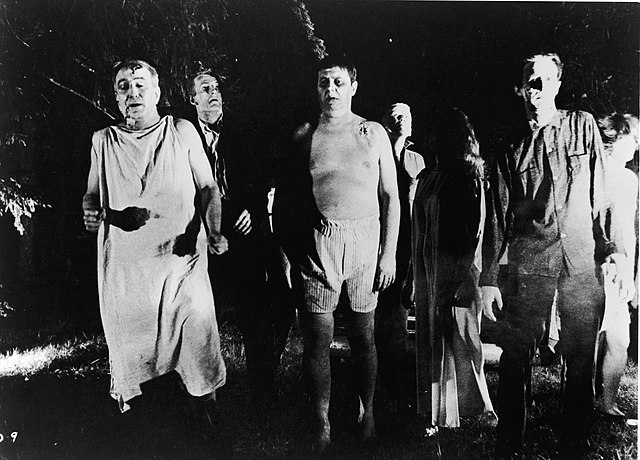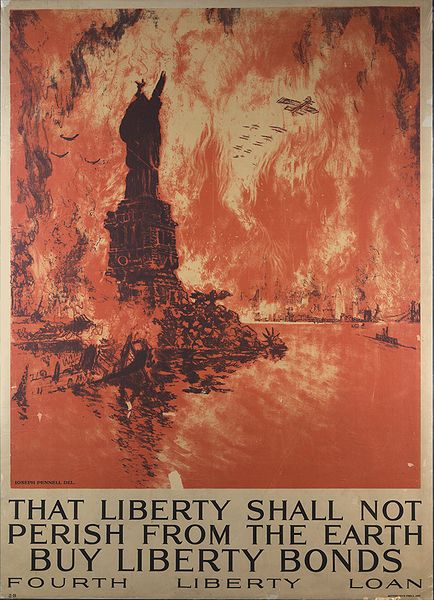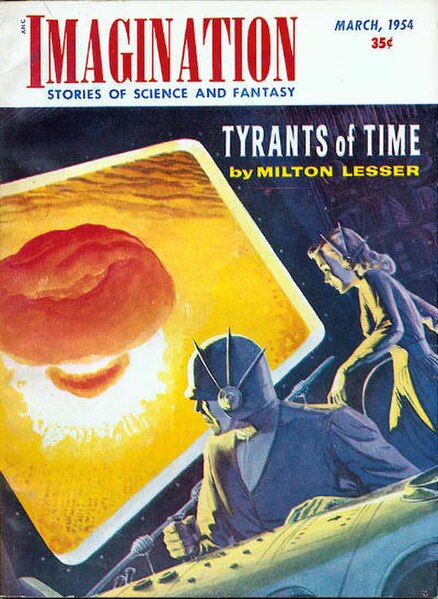Zombie apocalypse is a subgenre of apocalyptic and post-apocalyptic fiction in which society collapses due to overwhelming swarms of zombies. Typically only a few individuals or small bands of survivors are left living. In some versions, the reason the dead rise and attack humans is unknown, in others, a parasite or infection is the cause, framing events much like a plague. Some stories have every corpse rise, regardless of the cause of death, whereas others require exposure to the infection.
A group of actors dressed as zombies for a film
Night of the Living Dead established most of the tropes associated with the genre, including unintelligent but relentless zombies.
Apocalyptic and post-apocalyptic fiction
Apocalyptic and post-apocalyptic fiction is a subgenre of science fiction in which the Earth's civilization is collapsing or has collapsed. The apocalypse event may be climatic, such as runaway climate change; astronomical, such as an impact event; destructive, such as nuclear holocaust or resource depletion; medical, such as a pandemic, whether natural or human-caused; end time, such as the Last Judgment, Second Coming or Ragnarök; or any other scenario in which the outcome is apocalyptic, such as a zombie apocalypse, cybernetic revolt, technological singularity, dysgenics or alien invasion.
The apocalypse is also depicted in visual art, for example in Albert Goodwin's painting Apocalypse (1903).
Joseph Pennell's 1918 prophetic Liberty bond poster calls up the pictorial image of a bombed New York City, totally engulfed in a firestorm. At the time, the armaments available to the world's various air forces were not powerful enough to produce such a result.
Imagination magazine cover, depicting an atomic explosion, dated March 1954
An artist's 1922 depiction of a futuristic war






